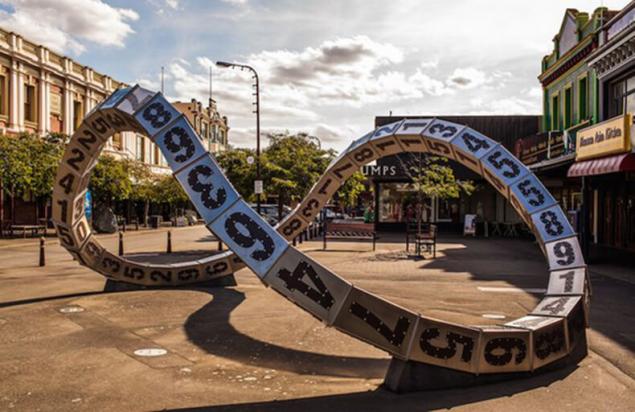562
What you did not know about synesthesia
Warm sound, flashy colors, bright idea, a cool look - these images are often found in our speech. However, for some of us is not simply words.
"Oh, please, gentlemen, a little more blue! This requires that the tone! Here, rich purple, not pink! "- As Franz Liszt Weimar once turned to the orchestra. Musicians would not be surprised so much if they knew that their conductor was synaesthete.

In 1920-1940 years of the Soviet psychologist Alexander Luria studied a phenomenal memory of his compatriot - Solomon Shereshevsky. This person could exactly reproduce the text or sequence of numbers, once heard them 10 or even 15 years ago.
During the experiment, psychologists found that his patient is able to "see" sounds and figures "in color", "touch" them or feel them "taste". The tone of 250 Hz to 64 dB of sound power seemed Shereshevskii velvet lace villi which protrude in all directions. Lace painted "soft pleasant pink-orange color».
Tone 2000 Hz and 113 dB seen him something like fireworks, colored in pink and red, and rough strips. The taste reminded that tone Shereshevskii spicy brine. In his feelings about such a sound can hurt your hand.
Figures for Shereshevskii were as follows: "5 - complete perfection in the form of a cone, the tower, the fundamental; 6 - This is the first of the "5", whitish. 8 -. Innocent, bluish milk, similar to lime »

In the 20 years the phenomenon of synaesthesia - the "unity of the senses" - was already known to psychologists; one of his first described by Charles Darwin's cousin - the Briton Francis Galton (article in Nature, 1880). His patients were graphemic synaesthetes: in their minds the numbers lined up in rows of quaint, differing among themselves shape and color
. Many years later, our contemporary, a neuroscientist Vilayanur S. Ramachandran, was an optical test - test for synaesthesia
.
The subjects show the left image. Among the images on it fives have two, which form a triangle. As a rule, do not notice it, but synesthetes easily reveal the figure, because for them all the symbols are brightly colored: some of them are represented of two bright red, someone - blue or green (on the right)
<. br> Professor Ramachandran studied a variety of types of synesthesia, such as tactile (in this case, touching different materials cause an emotional response: feelings of anxiety, frustration, or, conversely, of warmth and relaxation)
. In practice, this scientist was altogether exceptional cases, his student, who had a color-numeric synesthesia, was color-blind. Photosensitive cells in his eyes did not respond to the red and green portions of the spectrum, but the visual parts of the brain to function properly, giving the black-and-white figures, which looked the young man, all sorts of color associations. So he "saw" unfamiliar tones, calling them "unrealistic" or
"Martian." Evidence of this kind of sound strange to people with "normal" perception, but the neurologists there are ways to find out what and how to feel synesthetes, and check out their "testimony».

One of them - the monitoring of galvanic skin response (GSR). When we experience emotions in our body increases microscopic sweating, and with it decreases the electrical resistance of the skin. These changes can be tracked with the help of an ohmmeter, and two passive electrodes attached to the palm of your hand. If synaesthete emotionally responds to tactile, audible or color stimuli, confirmation of this will be a high level of RAG.
Different areas of the brain to perform certain functions. A prerequisite to synesthesia may be active cooperation between the areas responsible for the perception of color and sound, or, for example, recognition of graphical symbols and processing of tactile sensations.
Diffusion-tensor imaging allows you to see how the water molecules are distributed in the brain, and thus reveal the structural relationship between its departments.
"Oh, please, gentlemen, a little more blue! This requires that the tone! Here, rich purple, not pink! "- As Franz Liszt Weimar once turned to the orchestra. Musicians would not be surprised so much if they knew that their conductor was synaesthete.

In 1920-1940 years of the Soviet psychologist Alexander Luria studied a phenomenal memory of his compatriot - Solomon Shereshevsky. This person could exactly reproduce the text or sequence of numbers, once heard them 10 or even 15 years ago.
During the experiment, psychologists found that his patient is able to "see" sounds and figures "in color", "touch" them or feel them "taste". The tone of 250 Hz to 64 dB of sound power seemed Shereshevskii velvet lace villi which protrude in all directions. Lace painted "soft pleasant pink-orange color».
Tone 2000 Hz and 113 dB seen him something like fireworks, colored in pink and red, and rough strips. The taste reminded that tone Shereshevskii spicy brine. In his feelings about such a sound can hurt your hand.
Figures for Shereshevskii were as follows: "5 - complete perfection in the form of a cone, the tower, the fundamental; 6 - This is the first of the "5", whitish. 8 -. Innocent, bluish milk, similar to lime »

In the 20 years the phenomenon of synaesthesia - the "unity of the senses" - was already known to psychologists; one of his first described by Charles Darwin's cousin - the Briton Francis Galton (article in Nature, 1880). His patients were graphemic synaesthetes: in their minds the numbers lined up in rows of quaint, differing among themselves shape and color
. Many years later, our contemporary, a neuroscientist Vilayanur S. Ramachandran, was an optical test - test for synaesthesia
.

The subjects show the left image. Among the images on it fives have two, which form a triangle. As a rule, do not notice it, but synesthetes easily reveal the figure, because for them all the symbols are brightly colored: some of them are represented of two bright red, someone - blue or green (on the right)
<. br> Professor Ramachandran studied a variety of types of synesthesia, such as tactile (in this case, touching different materials cause an emotional response: feelings of anxiety, frustration, or, conversely, of warmth and relaxation)
. In practice, this scientist was altogether exceptional cases, his student, who had a color-numeric synesthesia, was color-blind. Photosensitive cells in his eyes did not respond to the red and green portions of the spectrum, but the visual parts of the brain to function properly, giving the black-and-white figures, which looked the young man, all sorts of color associations. So he "saw" unfamiliar tones, calling them "unrealistic" or
"Martian." Evidence of this kind of sound strange to people with "normal" perception, but the neurologists there are ways to find out what and how to feel synesthetes, and check out their "testimony».

One of them - the monitoring of galvanic skin response (GSR). When we experience emotions in our body increases microscopic sweating, and with it decreases the electrical resistance of the skin. These changes can be tracked with the help of an ohmmeter, and two passive electrodes attached to the palm of your hand. If synaesthete emotionally responds to tactile, audible or color stimuli, confirmation of this will be a high level of RAG.
Different areas of the brain to perform certain functions. A prerequisite to synesthesia may be active cooperation between the areas responsible for the perception of color and sound, or, for example, recognition of graphical symbols and processing of tactile sensations.
Diffusion-tensor imaging allows you to see how the water molecules are distributed in the brain, and thus reveal the structural relationship between its departments.























